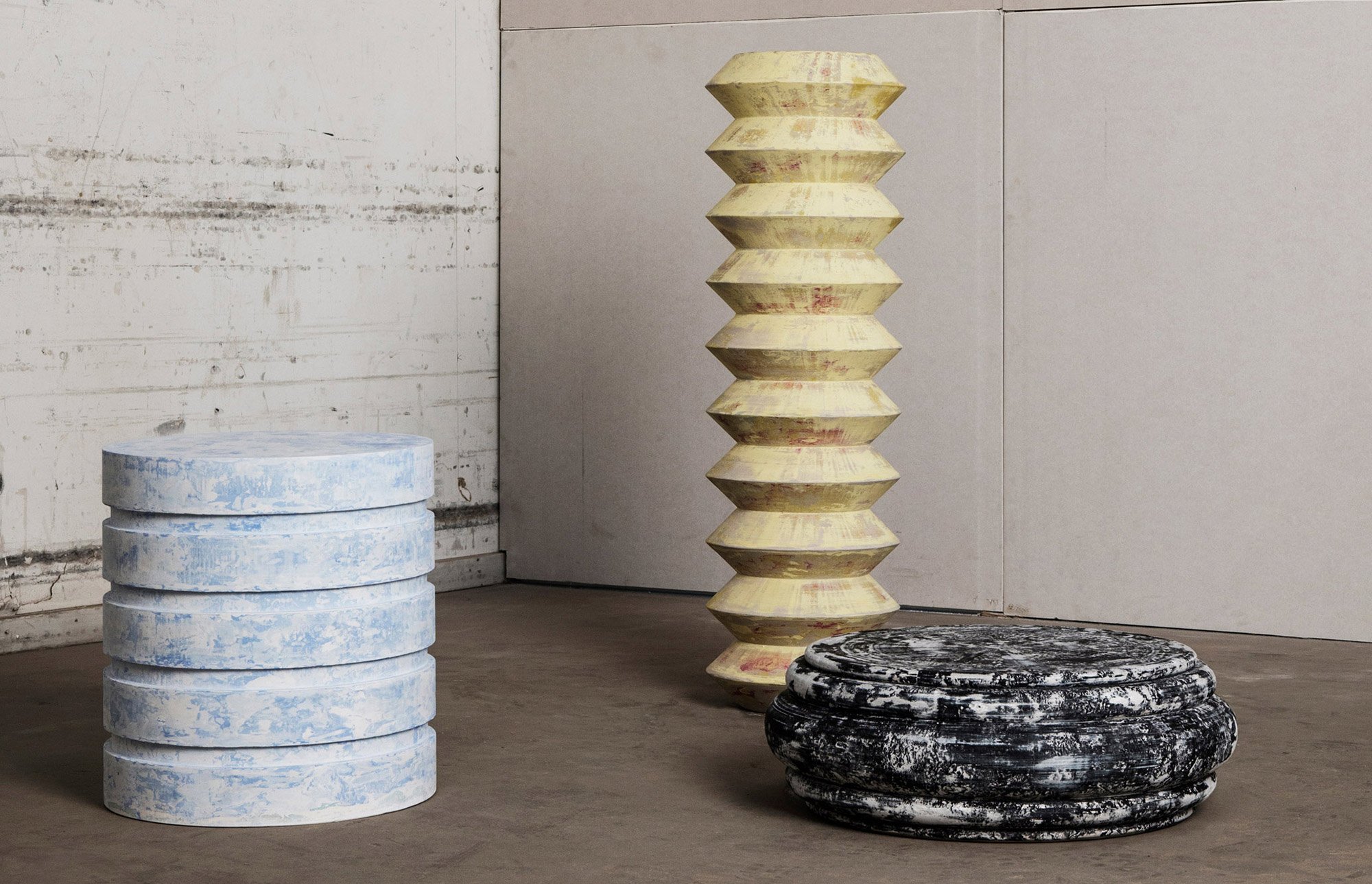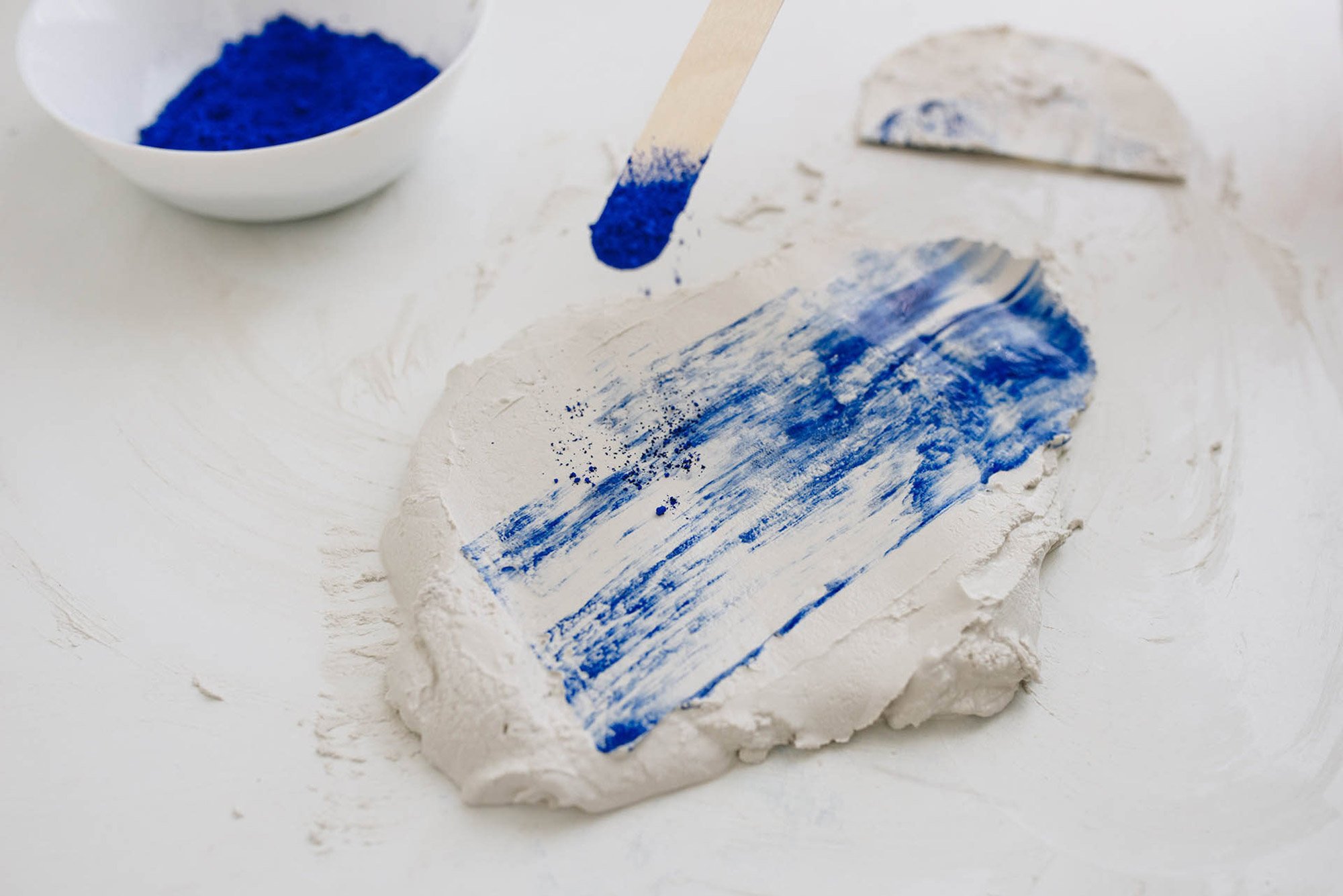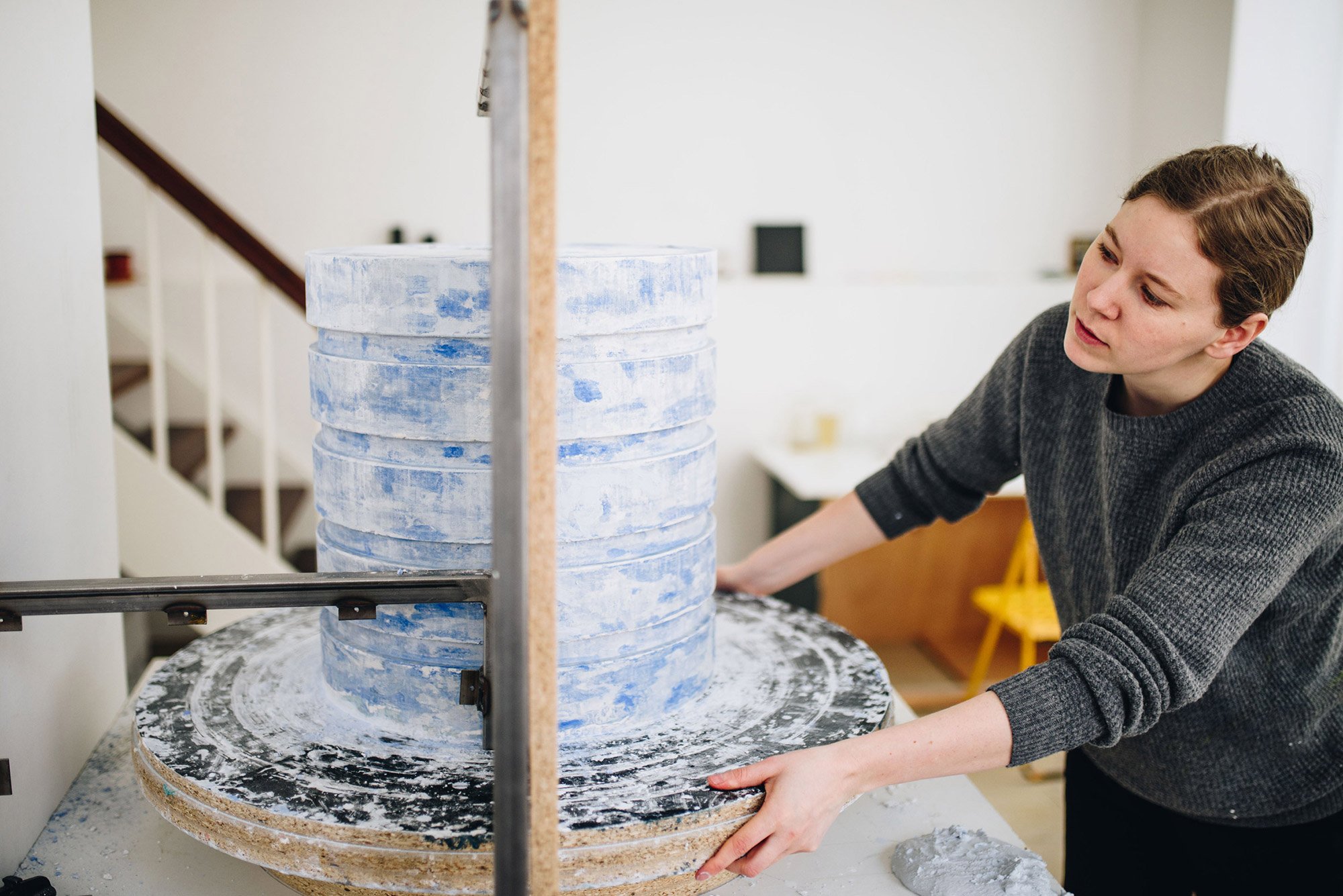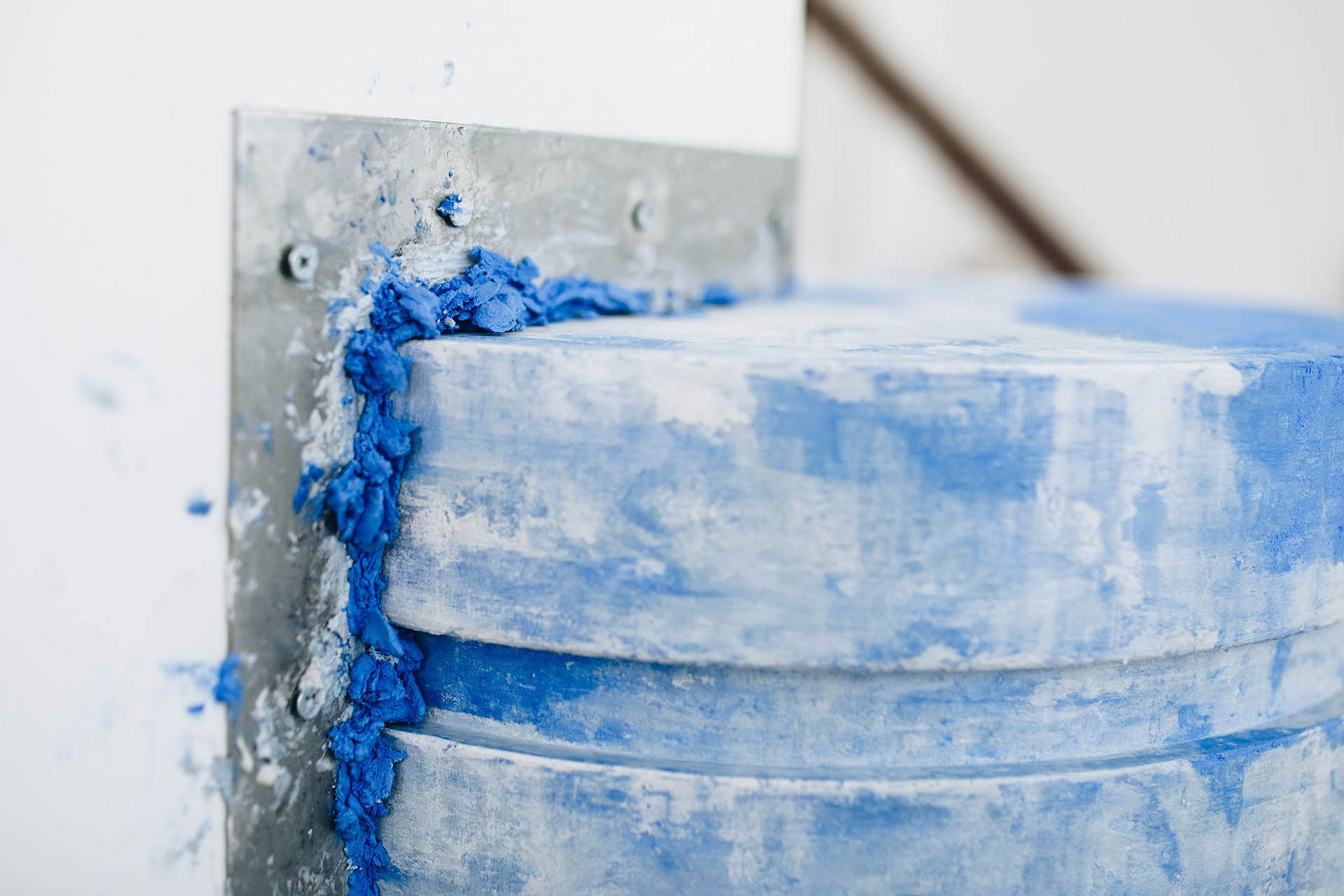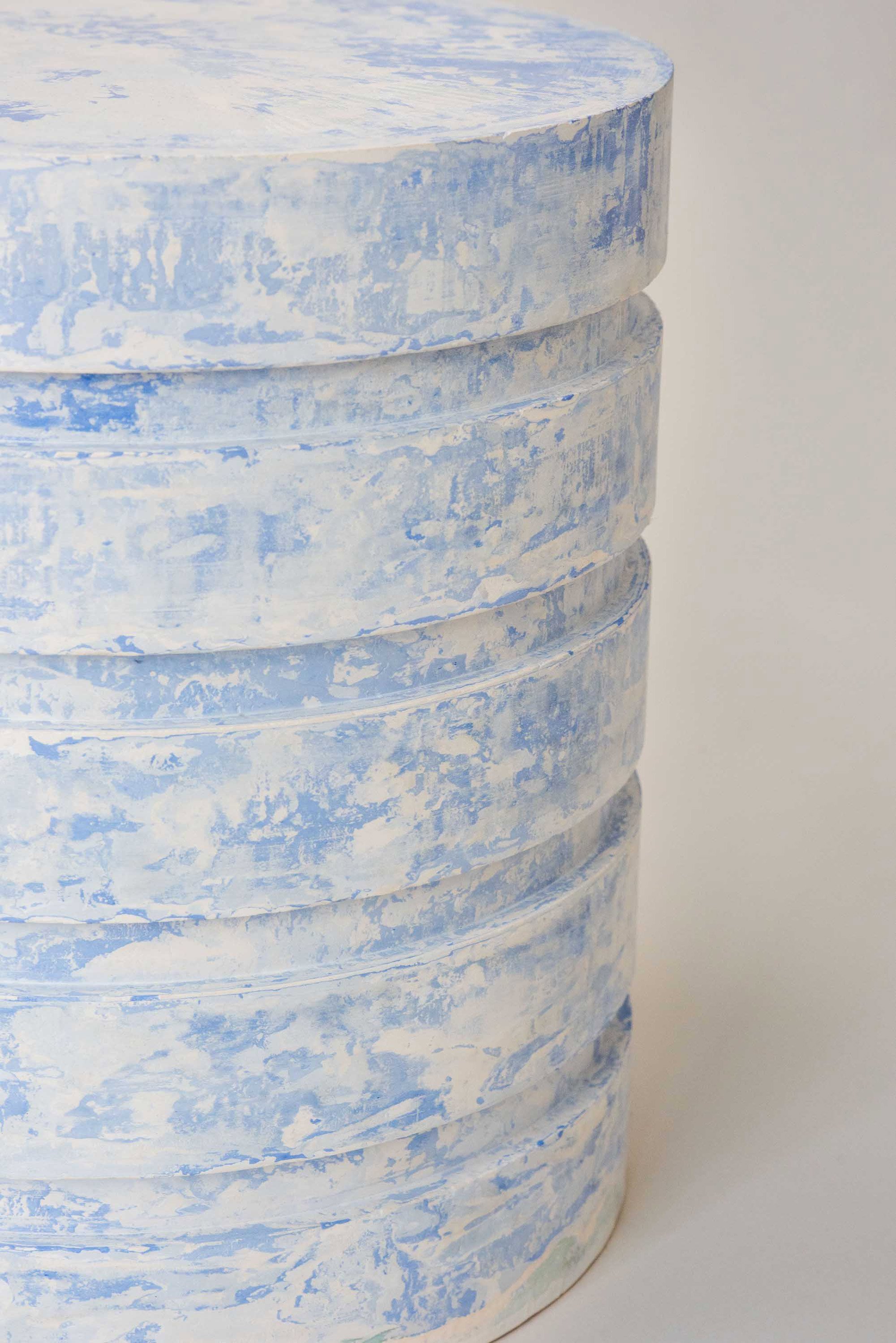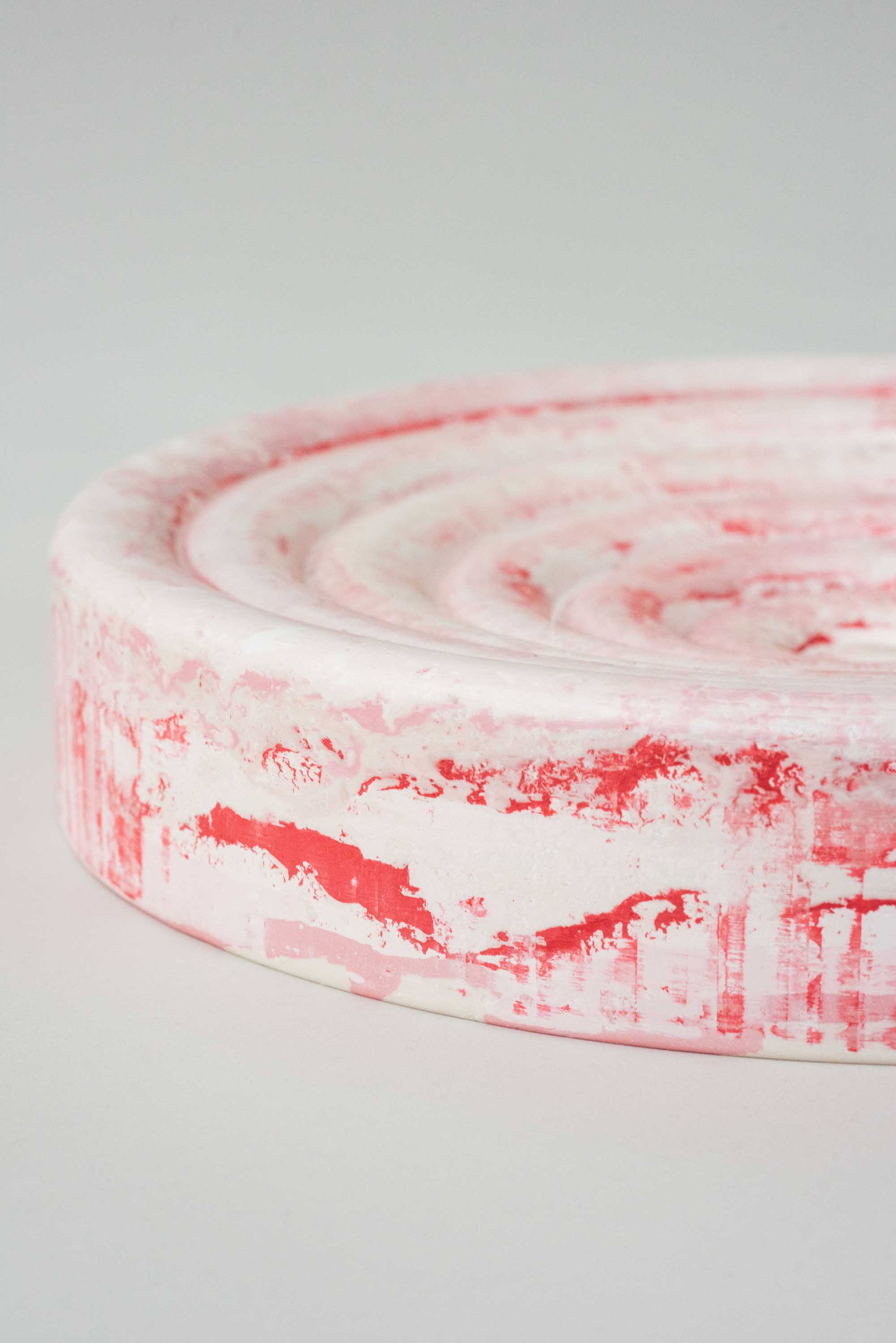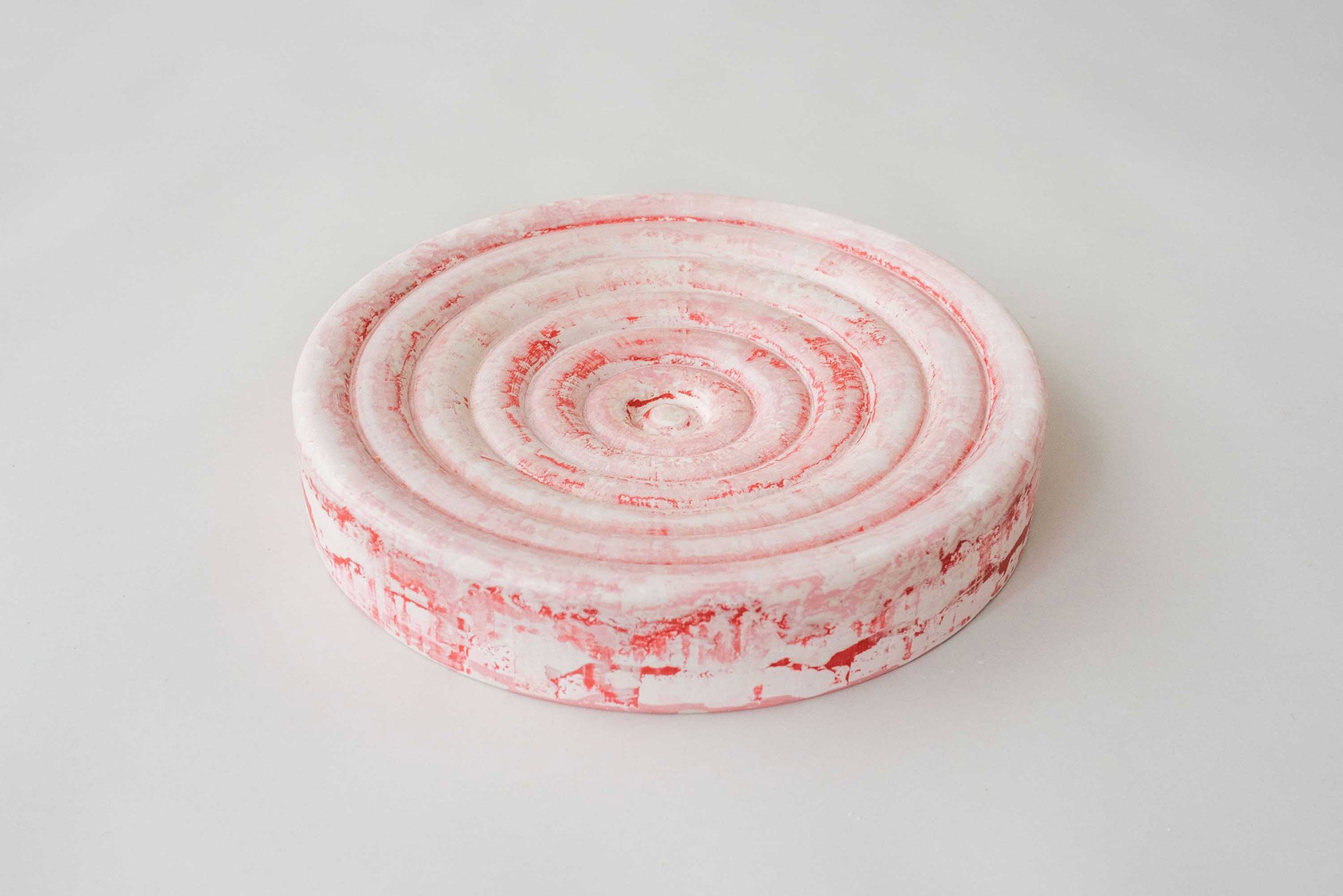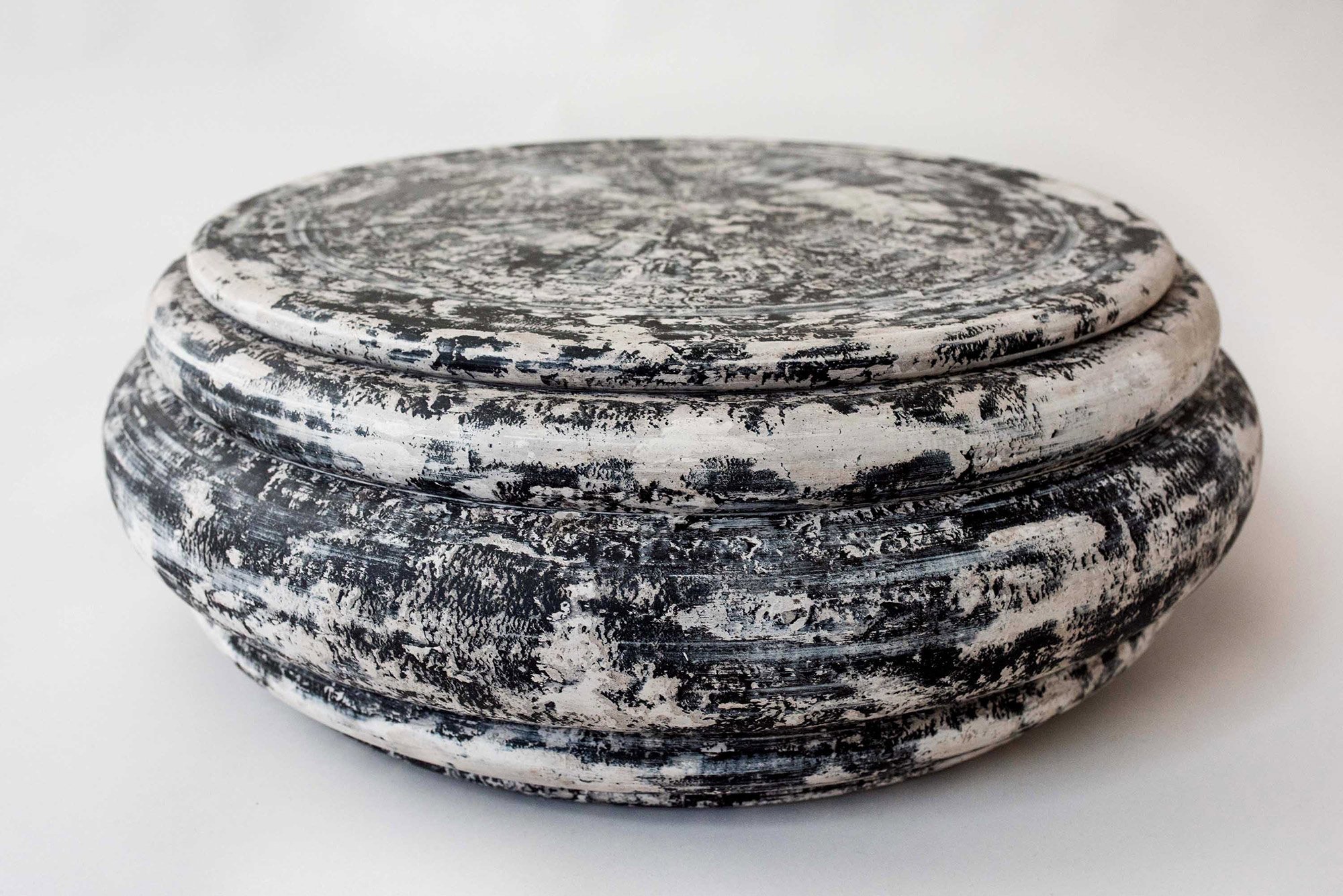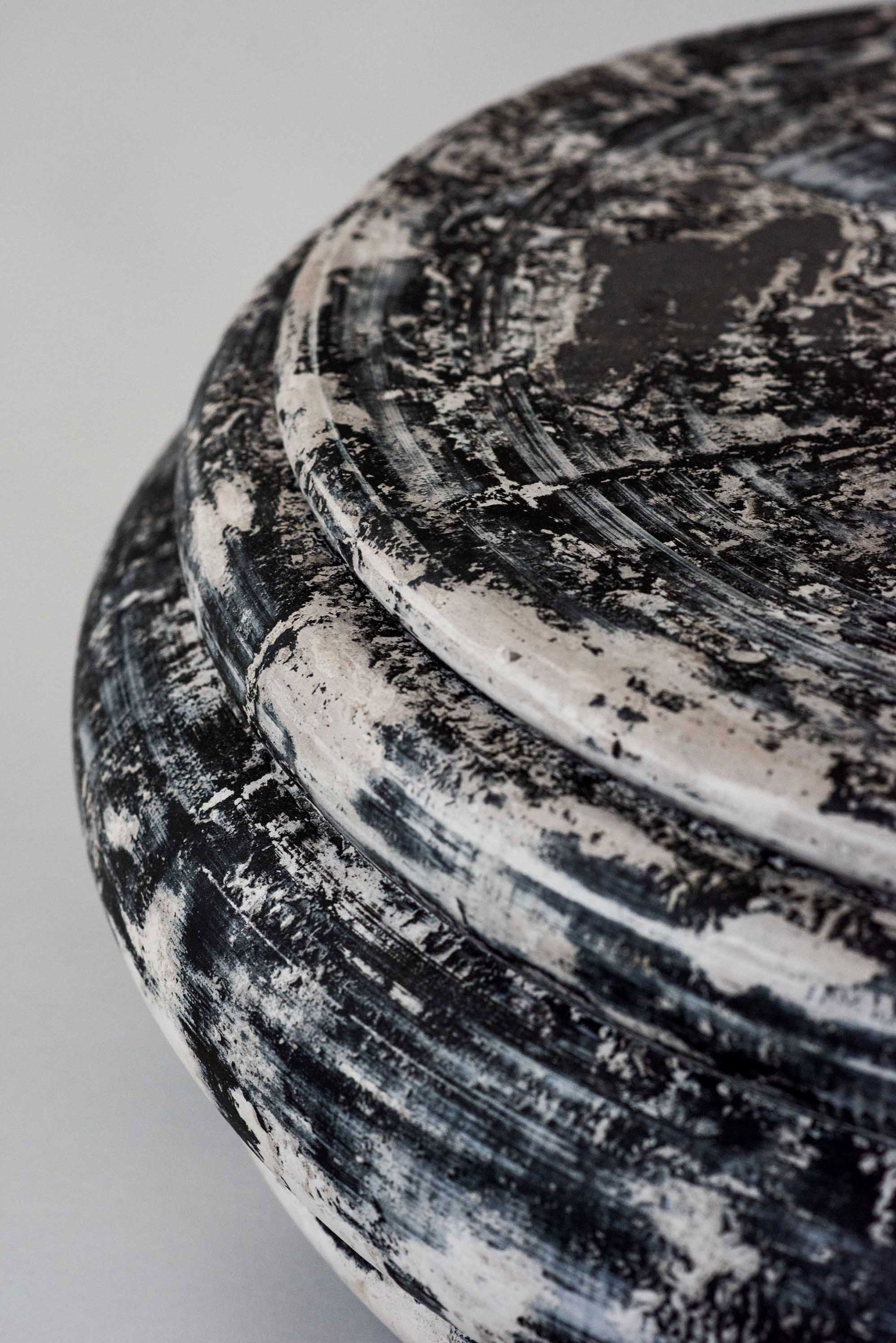Sculptural objects made with a technique previously used in classic architecture.
Originally created for the 2018 Reform Design Biennale at Munkeruphus, Denmark, the Revolve series highlights the concept of functional sculpture. Or sculptural function, depending on your view. Danish design duo Flensted Mouritzen wanted to explore the potential of stucco and traditional molding techniques from a different perspective. Fascinated by the concept of a 2D line becoming a 3D object, the duo turned to an old molding method.
While based on the artisanal technique used to make classic cornices from plaster, Troels Flensted and Ragna Mouritzen adapted the method for the Revolve series. The duo’s bespoke turning machine uses wet plaster and a single metal profile to make plaster sculptures, each with their distinctive shape and silhouette. Smooth ridges add an elegant finish, while mottled texture give the objects an organic feel.
By using pigments and wax, the two designers introduced another artistic element into the project. As the machine builds the sculptural designs, it also decorates them. “The process of building up the layers to create the form is emphasized by using different pigments in each layer of the stucco material, making their creation very present in the finished object. The resulting objects are ambiguous pieces that exist somewhere in between function and sculpture,” explain the designers. Flat and rounded or totem-like, the objects feature layers of colors and textures, enhanced by perfectly smooth finish. Photographs© Flensted Mouritzen, Per Krogh, and Benita Marcussen.


